A kitchen remodel can be one of the most rewarding home improvement projects, but it can also be one of the most expensive. On average, a full kitchen renovation in the U.S. can cost between $12,500 and $35,000, depending on the size and scope of the project. However, you don’t have to spend a fortune to get the kitchen of your dreams. With the right planning, smart choices, and a few money-saving strategies, you can create a beautiful, functional kitchen while staying on budget.
In this guide, we’ll cover practical tips and expert advice to help you save money on your kitchen remodel without sacrificing style or quality. Whether you’re considering doing it yourself or hiring professionals, these strategies will allow you to make informed decisions every step of the way. Let’s explore how you can achieve a kitchen remodel that looks high-end but costs less.
Set a Realistic Budget and Stick to It
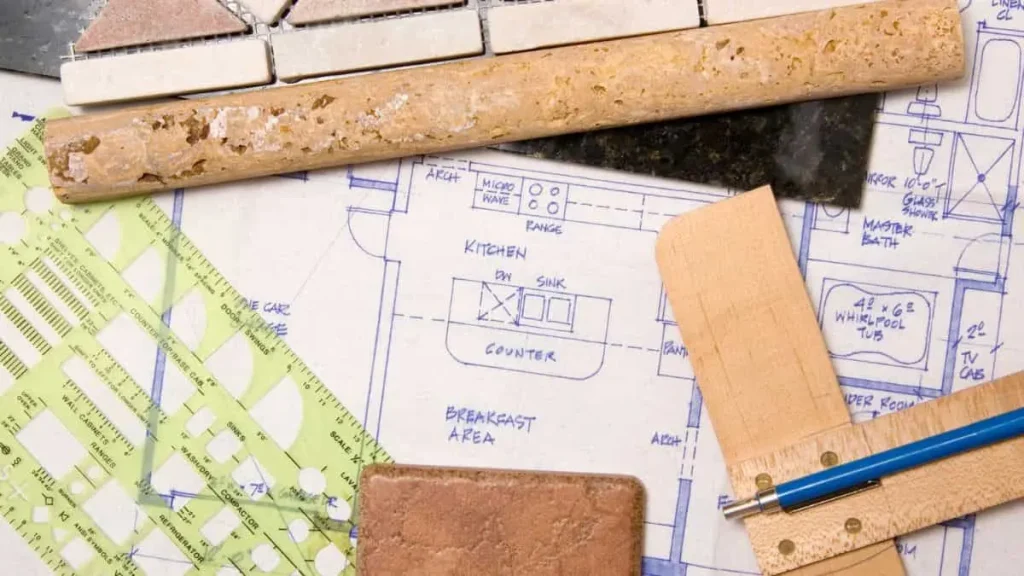
Additionally, being smart with your materials and upgrading appliances wisely ensures you’re making informed financial decisions. Keeping plumbing and electrical systems in place minimizes unnecessary expenses, while opting for open shelving or partial cabinetry can create a modern look without overspending. The transformative power of paint, the enduring appeal of classic styles, and hiring the right contractor are all crucial elements in the remodeling process.
Setting a budget is the most important step in saving money on your kitchen remodel. Without a clear budget, costs can easily spiral out of control. The key to success is determining your priorities and planning for both expected and unexpected expenses.
Start by identifying what matters most to you. Do you want high-end appliances, or is a functional layout more important? Knowing your top priorities helps you allocate funds to the most critical areas, while finding more affordable options for others. For example, if cabinets are a major focus, you can plan to spend more there but opt for cost-effective materials for your countertops.
It’s important to leave room for the unexpected. Remodeling projects often come with unforeseen costs, whether it’s a hidden plumbing issue or a material shortage. A good rule of thumb is to set aside an extra 10–15% of your total budget for these surprises. This buffer ensures that you’re not scrambling for additional funds if something goes wrong.
To stay organized and avoid overspending, consider using budgeting tools. There are several apps and online tools designed to help homeowners track expenses, set spending limits, and manage payments. These tools can provide visibility into how your money is being spent, so you can adjust your choices along the way and ensure you stick to your budget.
Recommended: How to Create an Effective Kitchen Remodeling Budget
DIY Where It Makes Sense
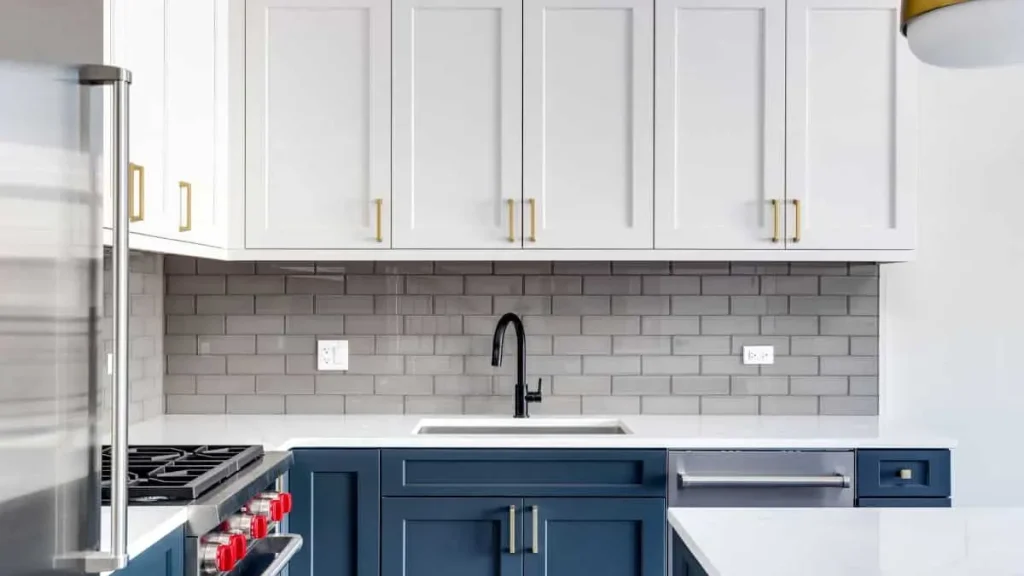
One of the easiest ways to save money on a kitchen remodel is by doing some of the work yourself. Tackling certain tasks can significantly reduce labor costs, but it’s essential to know where DIY is appropriate and where it’s best to leave the work to professionals.
For simple tasks like painting or tiling a backsplash, DIY can be an excellent way to save. These projects don’t require specialized skills, and there are plenty of tutorials available to guide you through the process. For example, painting your kitchen walls or cabinets can instantly refresh the space, and laying tiles for a backsplash can add personality and value without needing to hire a contractor. Taking on these projects yourself allows you to stretch your budget further.
However, it’s important to avoid DIY for complex jobs like plumbing and electrical work. These areas require professional expertise and are subject to building codes and safety regulations. Attempting to move a sink or rewire electrical outlets can lead to costly mistakes and potential safety hazards. Hiring a licensed contractor for these tasks ensures the work is done correctly and up to code, which will save you money in the long run by avoiding repairs or fines.
For those willing to invest some time in learning, there are many resources available to help with DIY kitchen projects. Online platforms like YouTube, blogs, and home improvement forums offer step-by-step guides for almost every aspect of kitchen remodeling. These resources make it easier for homeowners to take on manageable projects, building both confidence and skill while cutting costs.
Refacing and Refinishing Instead of Replacing
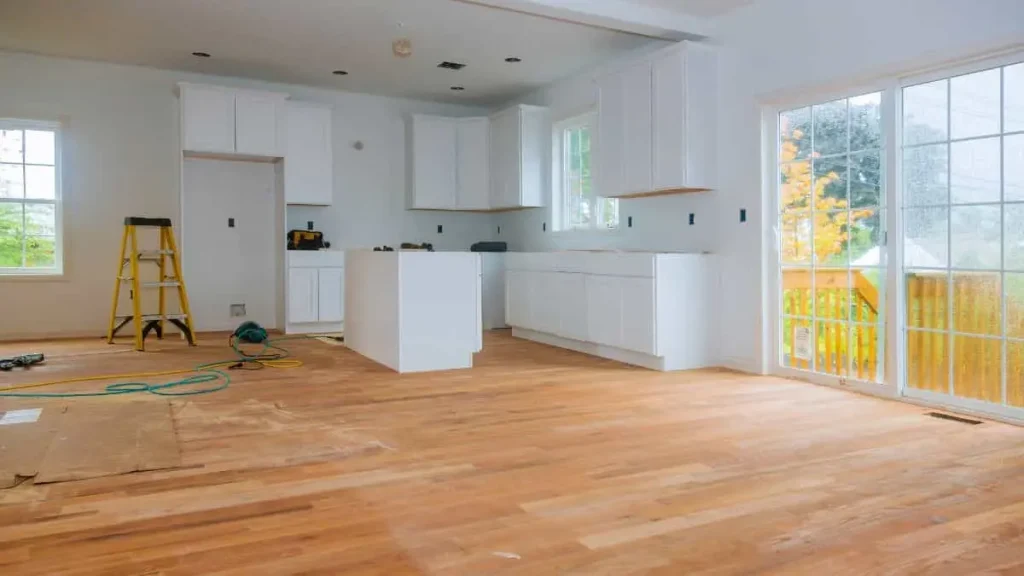
One of the biggest expenses in a kitchen remodel is replacing major elements like cabinets and countertops. However, you can achieve a fresh, updated look for a fraction of the cost by refacing or refinishing instead of fully replacing these components.
Cabinet refacing is a great alternative to replacing cabinets entirely. If your cabinets are structurally sound but just look outdated, refacing allows you to change the exterior appearance without the expense of new cabinetry. Refacing involves applying a new veneer to the outside of the cabinet boxes and replacing the doors and drawer fronts. It costs significantly less than a full replacement and can make your cabinets look brand new. For homeowners working within a budget, this option offers substantial savings, as a complete cabinet overhaul can easily run into the thousands, while refacing often costs less than $3,000.
Similarly, refinishing countertops is another cost-effective solution. If your countertops are still in good condition but just don’t match the style you’re going for, refinishing can give them a whole new appearance. This process typically involves applying a special coating or using epoxy kits that mimic the look of more expensive materials like granite or marble. For example, laminate countertops can be refinished to resemble stone at a fraction of the cost of replacing them. This approach allows homeowners to achieve the high-end aesthetic they want while staying within their financial limits.
Be Smart with Your Materials
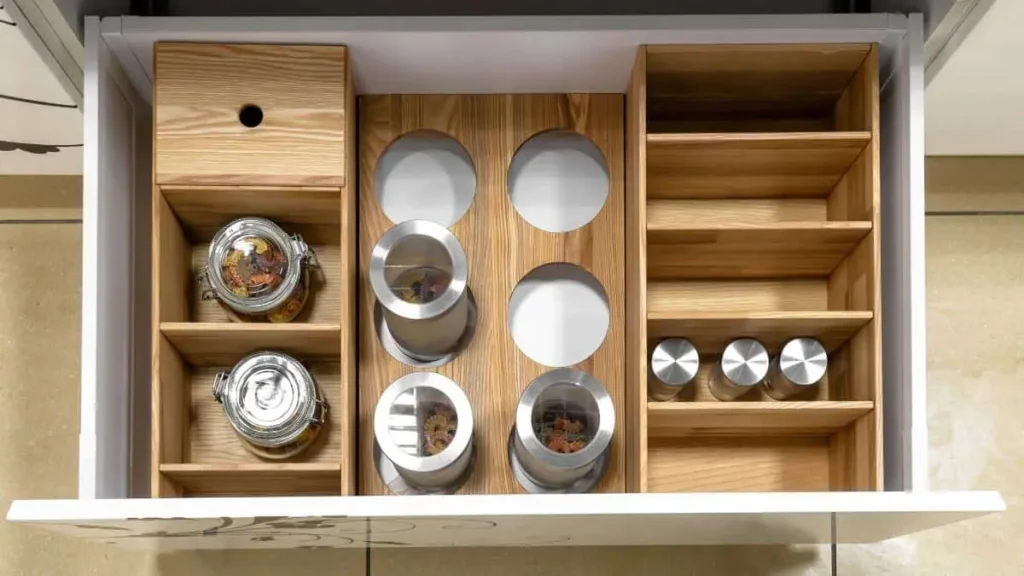
Choosing the right materials can make a huge difference in the overall cost of your kitchen remodel. While it’s tempting to opt for the most luxurious finishes, many budget-friendly alternatives can give you the high-end look without the high price tag.
Affordable alternatives to premium materials can help you achieve the style you want for less. For example, instead of costly granite or quartz countertops, you might consider laminate, butcher block, or concrete. Laminate has come a long way in recent years and now comes in designs that mimic natural stone. Butcher block offers a warm, rustic feel and is often more affordable than other options. Concrete countertops, when properly finished, provide a sleek, modern look at a fraction of the cost of stone. Each of these materials delivers both functionality and style, allowing you to stay on budget without sacrificing quality.
When it comes to flooring, vinyl and linoleum are excellent cost-effective choices. These materials can replicate the look of hardwood or tile but come at a much lower price. Vinyl planks, for instance, are designed to resemble hardwood floors and are durable, waterproof, and easy to install, making them a great option for kitchen floors. Linoleum, while often overlooked, is an eco-friendly and affordable material that can give your kitchen a fresh, updated look without the expense of ceramic or natural stone tiles.
Shopping smart can also lead to big savings. Many homeowners overlook the potential of finding discounted materials through alternative sources. For example, visiting local outlets, clearance sales, or even online marketplaces can yield high-quality materials at a lower price. Habitat for Humanity’s ReStores, which sell gently used or surplus building materials, are also great places to find bargains. You can often find tiles, lighting fixtures, or cabinet hardware for a fraction of retail prices, allowing you to stay within budget while still finding unique and stylish pieces.
Upgrade Appliances Wisely

Appliances can be one of the largest investments in a kitchen remodel, so upgrading them wisely is crucial to managing your budget. By making informed decisions on which appliances to buy and how to purchase them, you can save a significant amount of money while still improving the functionality and efficiency of your kitchen.
Energy-efficient models are a smart investment in any kitchen remodel. While they may have a slightly higher upfront cost compared to standard appliances, they save money in the long term by reducing energy consumption. For example, appliances with an ENERGY STAR rating use significantly less energy, which can lower your utility bills. Upgrading to an energy-efficient refrigerator, dishwasher, or oven can also make you eligible for tax credits or rebates, further reducing the overall cost of the remodel. Over time, these appliances not only save you money but also make your home more eco-friendly.
Another way to save on appliances is by considering floor models or those with minor cosmetic damage. Many retailers offer discounts on appliances that have small scratches or dents, but these imperfections don’t affect the performance of the product. A floor model might have been used as a display item but is still in excellent working condition. These minor flaws can result in significant savings, often 20-30% off the original price. It’s a great way to get high-quality appliances for less, especially when the imperfections are barely noticeable once installed.
Staggering your appliance purchases is another strategy to spread out costs. Instead of buying all your appliances at once, consider replacing them gradually, as your budget allows. For example, you might upgrade the refrigerator during the remodel but wait a few months before purchasing a new stove. By spacing out these large expenses, you reduce the immediate financial burden and give yourself time to find the best deals.
Choosing the right appliances with cost in mind is an important part of keeping your kitchen remodel within budget. By prioritizing energy efficiency, seeking out discounted models, and spreading out your purchases, you can enhance your kitchen without overspending.
Don’t Move Major Plumbing or Electrical
One of the costliest parts of a kitchen remodel is moving plumbing and electrical systems. Although changing the layout of your kitchen may seem like a great way to improve its functionality, moving major systems like sinks, dishwashers, or ovens can significantly increase your renovation costs. Keeping your kitchen’s existing layout intact is one of the smartest ways to save money.
Plumbing relocation requires extensive labor and can involve tearing out walls or floors to reroute pipes. For example, moving a sink or dishwasher to a different location means rerouting the water supply lines and drain pipes, which adds both material and labor costs. Similarly, moving gas lines for a stove or oven involves complex, specialized work that can quickly escalate your budget. By leaving these systems where they are, you avoid these additional costs and the potential complications that come with altering plumbing infrastructure.
Electrical work is also expensive to relocate. If you decide to move major appliances or install new lighting fixtures in different areas, it often requires rewiring, which is labor-intensive and must be done by a licensed electrician. Moving outlets, adding circuits, or rewiring for a new layout can also lead to unexpected issues, such as the need to upgrade your electrical panel to handle increased load. These hidden costs can quickly derail your budget, making it essential to plan around the existing electrical framework whenever possible.
Instead of moving plumbing or electrical systems, you can make smaller changes to improve the flow and functionality of your kitchen. Upgrading your fixtures or appliances in their current locations can refresh the space without the added cost of relocation. For instance, swapping out an outdated faucet for a modern, water-efficient model, or upgrading your stove or refrigerator to a newer model in the same spot, offers the benefit of a remodel without the expense of major system changes.
Opt for Open Shelving or Partial Cabinetry

Choosing open shelving or partial cabinetry is an effective way to save money while creating a stylish and functional kitchen. Traditional upper cabinets can consume a significant portion of your remodeling budget, and by opting for these alternatives, you can reduce costs while achieving a modern aesthetic.
Open shelving offers a trendy and practical solution for displaying your dishes, glassware, and decorative items. This approach eliminates the expense of upper cabinets, allowing you to allocate those funds to other areas of the remodel. Open shelves can be made from various materials, such as wood or metal, and can be customized to match your kitchen’s design. They create an open, airy feel, making the space appear larger, and they encourage organization since everything is visible and easily accessible. Additionally, you can change out items on display to refresh the look of your kitchen without incurring additional costs.
Partial cabinetry can also help cut expenses while providing storage solutions. Instead of installing full upper cabinets, consider using a combination of upper cabinets and open shelving or only installing cabinetry in select areas. This allows for additional storage while reducing the amount of cabinetry required. For example, you might choose to place cabinets above the countertops where you do most of your cooking and leave the space above the sink open for shelves. This strategy not only saves money but also adds visual interest and variety to your kitchen design.
Incorporating cabinetry alternatives can enhance both functionality and aesthetics. For instance, using decorative brackets to support open shelves or installing a few glass-front cabinets can add style while keeping costs in check. Glass-front cabinets allow you to display beautiful dishware while hiding less attractive items in other areas, creating a balanced look.
Paint Is Your Best Friend
One of the most cost-effective ways to transform your kitchen is through the power of paint. A fresh coat can dramatically change the atmosphere of the space, making it feel more modern and inviting without requiring a significant financial investment.
Painting your kitchen cabinets can breathe new life into tired cabinetry. Instead of replacing cabinets, which can be expensive, a simple paint job can create a whole new look. Opting for lighter colors can make a small kitchen feel more spacious, while bold colors can add personality and flair. The process is relatively straightforward, and many homeowners can successfully tackle it themselves. Investing in quality paint designed for cabinetry ensures a durable finish that withstands the wear and tear of daily use.
Related: Best Kitchen Color Schemes
In addition to cabinets, don’t underestimate the impact of painting walls and trim. A fresh color on the walls can set the tone for the entire kitchen. Soft neutrals can create a calming effect, while brighter colors can inject energy into the space. Moreover, painting the trim, baseboards, and moldings can provide a polished look, making the kitchen feel cohesive and well-maintained. Choosing a semi-gloss or satin finish for these areas not only enhances durability but also adds a touch of elegance.
Another creative option is to paint your backsplash. If you’re not ready to invest in new tiles, consider using paint designed for kitchen use, which can withstand heat and moisture. This approach allows for an easy update without the expense of new materials. You can use stencils or tape to create patterns or designs that add visual interest, further enhancing the overall appearance of your kitchen.
Go for Classic Styles Over Trends

When remodeling your kitchen, opting for classic styles instead of fleeting trends is a prudent way to ensure longevity and value in your investment. Trends can come and go, often leaving homeowners with spaces that feel outdated within a few years. By focusing on timeless designs, you can create a kitchen that remains appealing and functional for many years to come.
Classic styles, such as Shaker cabinets, subway tiles, and neutral color palettes, have stood the test of time and continue to be popular choices among homeowners. These elements are not only aesthetically pleasing but also versatile, allowing for easy updates with accessories and décor as tastes evolve. For instance, Shaker-style cabinetry offers a clean and simple look that works well in both modern and traditional kitchens. This versatility means that your kitchen can adapt to changing trends without requiring a complete overhaul.
Investing in quality materials that embody classic designs is also essential for creating a kitchen that remains stylish over time. For example, hardwood floors and natural stone countertops are durable choices that exude timeless elegance. While they may have a higher initial cost, their longevity and appeal make them worthwhile investments. In contrast, less expensive, trendy materials might require replacement sooner, leading to higher long-term costs and more frequent renovations.
Incorporating classic fixtures and finishes can also enhance the overall look of your kitchen. Opting for stainless steel appliances, which are both functional and timeless, can complement classic cabinetry and countertops beautifully. Additionally, choosing classic lighting fixtures, such as pendant lights with a simple design, can add warmth and character to the space without falling prey to rapidly changing styles.
Hire the Right Contractor for Your Budget
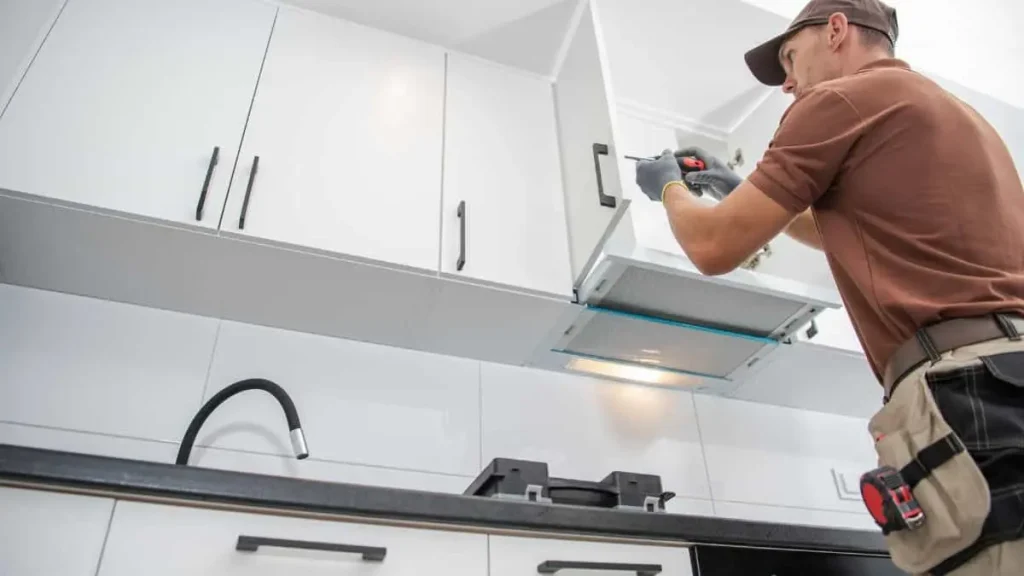
Selecting the right contractor is a critical step in achieving a successful kitchen remodel while staying within budget. The contractor you choose can significantly impact not only the quality of the work but also the overall cost of the project. A well-chosen contractor can provide valuable insights, manage the project efficiently, and help you avoid costly mistakes.
Start by researching and gathering recommendations for potential contractors. Look for professionals who specialize in kitchen remodeling and have a proven track record. Personal referrals from friends or family can be particularly valuable, as they often provide insight into the contractor’s work ethic, reliability, and ability to stay within budget. Additionally, online reviews and ratings can help you assess the reputation of potential candidates. Ensure that the contractors you consider are licensed, insured, and have the necessary certifications to perform the work.
Once you have a shortlist of potential contractors, it is essential to conduct interviews and obtain detailed estimates. During these discussions, ask about their experience, approach to kitchen remodeling, and how they handle budget constraints. A good contractor will be transparent about costs and willing to discuss ways to save money without compromising quality. Requesting a written estimate from each candidate will provide a clearer picture of the financial commitment involved. Ensure that the estimates break down labor, materials, and any potential additional costs, allowing you to make an informed comparison.
Additionally, be open to discussing your budget constraints with your chosen contractor. A reputable professional will appreciate your transparency and work with you to find solutions that align with your financial limitations. They can suggest cost-effective alternatives for materials, design choices, and labor to help you stay within budget while achieving your desired outcome.
Finally, trust your instincts when making a decision. Choose a contractor who communicates effectively and demonstrates a genuine interest in your project. A strong working relationship will facilitate smoother collaboration throughout the remodel. By hiring the right contractor for your budget, you ensure that your kitchen remodel is executed efficiently, meets your expectations, and ultimately enhances your home’s value without straining your finances.
FAQs
What is the average cost of a kitchen remodel?
The average cost of a kitchen remodel varies widely based on factors such as the size of the kitchen, materials used, and the extent of the renovations. On average, homeowners can expect to spend between $12,000 and $35,000, but larger or more upscale remodels can exceed $50,000.
How can I save money on my kitchen remodel?
To save money on your kitchen remodel, set a realistic budget and stick to it, consider DIY projects where feasible, and opt for refacing or refinishing cabinets rather than replacing them entirely. Choosing open shelving, smart materials, and upgrading appliances wisely can also contribute to cost savings. Lastly, hire the right contractor who can help you manage costs effectively.
Are open shelves practical in a kitchen?
Yes, open shelves can be practical in a kitchen. They provide easy access to everyday items and create a sense of openness. However, they require regular maintenance to keep the items organized and clean. It’s essential to consider what items will be stored on open shelves and to curate them to maintain a tidy appearance.
What types of materials are best for a budget kitchen remodel?
For a budget kitchen remodel, consider using materials like laminate countertops, vinyl flooring, and engineered wood for cabinetry. These materials offer a good balance of durability and affordability. Additionally, opting for mid-range appliances can provide a quality upgrade without the high costs associated with premium brands.
How long does a typical kitchen remodel take?
A typical kitchen remodel can take anywhere from a few weeks to several months, depending on the scale of the project. Smaller updates, such as painting and replacing fixtures, may only take a few weeks, while larger renovations that involve structural changes or extensive custom cabinetry can take several months to complete.
Should I live in my home during the remodel?
Whether or not to live in your home during a kitchen remodel depends on the extent of the renovations. If the remodel is minor, you may be able to stay. However, significant changes, especially those affecting plumbing and electrical systems, may create an environment that is inconvenient or unsafe. In such cases, temporary relocation might be worth considering for your comfort and safety.
How can I ensure my kitchen remodel adds value to my home?
To ensure your kitchen remodel adds value to your home, focus on timeless designs, quality materials, and functional upgrades. Keep in mind the preferences of potential buyers in your area when selecting styles and finishes. Additionally, staying within a reasonable budget can prevent over-improvement compared to the rest of the neighborhood, maximizing your return on investment.
Conclusion
In conclusion, remodeling your kitchen doesn’t have to come with a hefty price tag. By implementing these practical strategies, you can achieve a beautiful and functional space while staying within your budget. Setting a realistic budget, opting for DIY projects where appropriate, and choosing to reface or refinish instead of replace are all effective ways to cut costs.
Additionally, being smart with your materials and upgrading appliances wisely ensures you’re making informed financial decisions. Keeping plumbing and electrical systems in place minimizes unnecessary expenses, while opting for open shelving or partial cabinetry can create a modern look without overspending. The transformative power of paint, the enduring appeal of classic styles, and hiring the right contractor are all crucial elements in the remodeling process.



